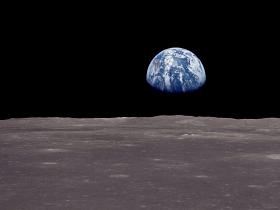Fukushima: CBS-TV reports on spread of horrific radiation dead zone
I can’t say I’m the thrill seeker of our team. I love an adventure and I’m still up for a new experience, and acknowledge risk-taking is part and parcel of a job like mine. But frankly dear reader, I like to do the calculations. Some additions and subtractions before leaping head first into the unknown. So when I realised my only safety devices on my latest assignment were a couple of Geiger counters, some pretty flimsy pieces of protective clothing and a burly bloke named Frank, I must say I feared this was one of those times when the risks didn’t add up. However, with my trusty producer, Phil Goyen, and crew, Scott Morelli and David Ballment, in toe, I headed into the exclusion zone of Chernobyl, the scene of the world’s worst nuclear disaster. Chernobyl is about three-and-a-half hour’s drive from Kiev, the capital city of Ukraine, a country still carrying the scars of a human and environmental catastrophe. In April, 1986, a nuclear reactor at the Chernobyl power plant exploded, ironically during a safety test. What followed affected the world. A massive plume of smoke and a cloud of radiated particles swept across Europe and around the globe. 25 years later, the contamination is still showing up in the air, the soil, the food and worst of all - the people. At a specialist hospital in Kiev, set up specifically for victims of Chernobyl, there are children born years after the explosion, who are suffering serious illnesses that doctors there believe are a direct result of nuclear contamination. So it was with some trepidation we ventured into Chernobyl. The radiation levels are inconsistent … high and dangerous in some areas and low in others. But without instruments to tell you, you have no idea where this radioactive contamination is. You can’t just roll up and get in to Chernobyl. The Ukraine government has to give you permission. It’s an eerie place. A dead zone, where remnants of lives once lived can be seen everywhere. Homes and schools and playgrounds frozen in time from the day workers and their families were ordered out, never to return. We entered a hospital where the first fire fighters to attend the exploding nuclear plant were taken. Their uniforms are still in the basement, and still highly radioactive. It was a moment I will not forget. For the first time I had a sense of the fear and horror those rescue workers must have felt. A terrible death from something they couldn’t see or touch or smell, but certainly felt. The shrill of a Geiger counter was the only way of me knowing I was in a dangerous place. I didn’t like it. The accommodation in Chernobyl, understandably, is basic. And so, too, is the food. We gingerly ate what was provided and drank with caution. We were not allowed to sit or place any of our equipment on the ground. There are people still working in Chernobyl. They undergo regular health checks and are sent away when it’s deemed their accumulated radiation dose is nearing a dangerous level. We, all of us, and our vehicle were checked for radiation before leaving. So by now you’re wondering who the hell is Frank! Good question. Frank was our radiation expert, because after Chernobyl we travelled to Japan and the contaminated territory of Fukushima. Japan’s nuclear disaster in Fukushima is ongoing. There is an exclusion zone and thousands of people have been forced to leave their homes. These are not earthquake or tsunami victims. These are radiation refugees - people who miraculously survived the horrors of that dreadful natural disaster in March, only to be made homeless by the meltdown of nuclear reactors in their region. With Frank and his Geiger counters, we ventured into the exclusion zone. Like Chernobyl, the radiation levels varied. And when they got too high, Frank shouted at us. We listened to Frank, well, mostly when he shouted. Actually, Frank did a bit of shouting. We had a habit of forgetting the rules. No equipment on the ground. Clean your shoes. Don’t get out of the car until Frank says. Journalists, Frank found out, hate rules. Frank, I think, might now hate journalists. Much of the region is rural and deceptively peaceful. A Geiger counter the only indication radiation, the invisible enemy, is present. The human face of this dreadful situation can be seen in shelters in public buildings. It’s where you’ll find families, old and young, struggling to retrieve their lives - a near impossibility when all you have is a cardboard box to mark out your spot, your home. I don’t know how Japan will recover, and how these refugees will survive. Like Chernobyl, Fukushima could well become a dead zone, where no one will ever be able to return.
Comments
There are 0 comments on this post















